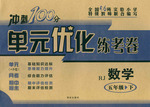题目内容
— Factories are not allowed to put their waste water into the river.
— _____. It has been polluted so seriously.
— _____. It has been polluted so seriously.
[ ]
A. Entirely
B. Frequently
C. Exactly
D. Simply
B. Frequently
C. Exactly
D. Simply
C

练习册系列答案
 冲刺100分单元优化练考卷系列答案
冲刺100分单元优化练考卷系列答案
相关题目